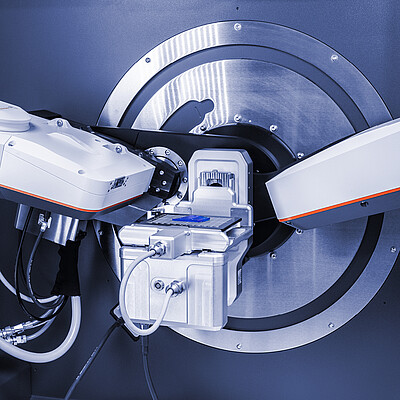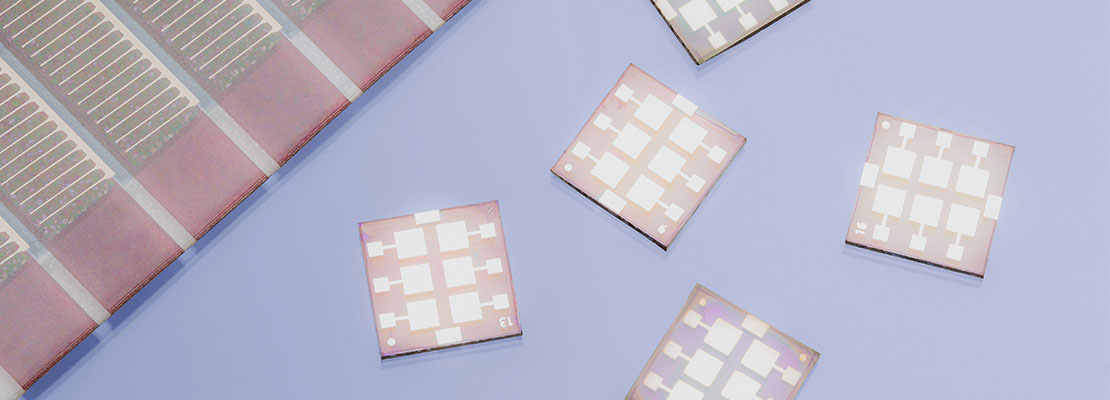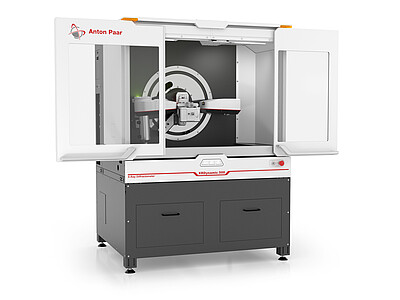GIXRD: Precision in Layer and Thin film Analysis
Grazing incidence X-ray diffraction (GIXRD) is a special method of X-ray analysis, allowing detailed investigation of layers and thin films. By employing a shallow X-ray incidence angle, GIXRD selectively probes the surface layers of a material, making it invaluable for studying thin films, coatings, and nanomaterials.
This technique holds a crucial role in advancing surface science and engineering of a material, as it reveals key structural information without penetrating too deeply, ensuring precise data from top layers. GIXRD’s unique approach supports critical breakthroughs in modern research, such as development of next-generation materials for electronics, energy storage, and nanotechnology.

Principles of Grazing Incidence
In GIXRD, an X-ray beam at very-small angle probes the material’s surface. This shallow angle minimizes penetration, providing sensitivity to thin surface layers giving access to structural details in the outermost layers without interference from bulk material.

Comparison with Conventional XRD
Unlike conventional XRD, which mainly examines bulk properties, GIXRD uses a special setup with low incidence angle. This enables it to suppress signals originating from the bulk material, making it ideal for analyzing surfaces, thin films and layers

Surface Layer Focus
GIXRD’s well-defined, fixed incidence angle amplifies data from the sample’s surface region, making it ideal for examining thin films and layers. It allows scientists to study material properties such as composition, orientation, and crystallinity with exceptional precision.
Technical Challenges in GIXRD: Precision and Data Complexity

Grazing incidence X-ray diffraction (GIXRD) poses unique technical challenges that must be carefully managed to obtain accurate and reliable data. From specific beam geometry to precise sample positioning and advanced data interpretation, each aspect plays a crucial role in ensuring successful experiments. Below are some common challenges in GIXRD and the solutions designed to overcome them.
Managing precise alignment
GIXRD’s shallow incidence angle requires precise alignment of the sample, as even minor shifts can alter results. Advanced instruments with automated alignment features solve this by ensuring consistent, accurate beam and sample positioning for every measurement.
Having well-defined incidence angle
Data from GIXRD is highly surface-sensitive; therefore, a well-defined incidence angle is crucial. This can be achieved using a suitable mirror that produces a parallel beam with low divergence. Modern instruments can automatically adjust certain parameters to generate a parallel beam.
Controlling penetration depth
Adjusting penetration depth in GIXRD is key, especially for ultra-thin films. Instruments with reliable, reproducible and precise setting of the incidence angle allow fine-tuning, enabling users to target specific layers, providing flexibility across a range of thin-film applications.
Advanced data interpretation
Interpreting GIXRD data can be complex due to interactions between the surface and bulk, which may cause subtle changes in the crystal structure. Therefore, highly precise and reproducible detector movements with the highest resolution are required.
Selecting a suitable holder and stage
Thin films such as coatings can be applied to samples of various shape and size. Therefore, a variety of sample holders and stages are required.
Applications of GIXRD

Thin film analysis
GIXRD excels in thin film characterization, offering insights into layer composition, crystallinity, and orientation. Its sensitivity to surface features makes it a go-to technique for quality control in coatings, microelectronics, and nanotechnology.
Material science research
In material science, GIXRD supports the development of new thin film materials by accurately characterizing surface structures. Its data is critical for understanding properties in applications such as semiconductors, solar cells, and nano-coatings.
Surface layer diagnostics
GIXRD is ideal for analyzing surface modifications and interactions, such as corrosion, oxide layers, and contaminant buildup. It provides accurate surface composition data, which is crucial for quality control in metal finishing and protective coatings.

Selecting the Ideal GIXRD System for Layer and Thin Film Analysis
XRDynamic 500 stands out with unique features tailored to layer and thin film analysis. With fully automated optics and precise beam alignment, XRDynamic 500 ensures consistent, reliable results, even with complex beam geometries and thin film challenges.
The system’s adjustable incidence angles allow users to control depth sensitivity, targeting surface layers with pinpoint accuracy. Additionally, XRDynamic 500 offers advanced data analysis software that simplifies complex interpretations, making it a versatile choice for researchers and industry professionals who require surface-focused, high-quality XRD data across a wide range of applications.
Find the perfect GIXRD system for your research—contact us today to explore solutions!
